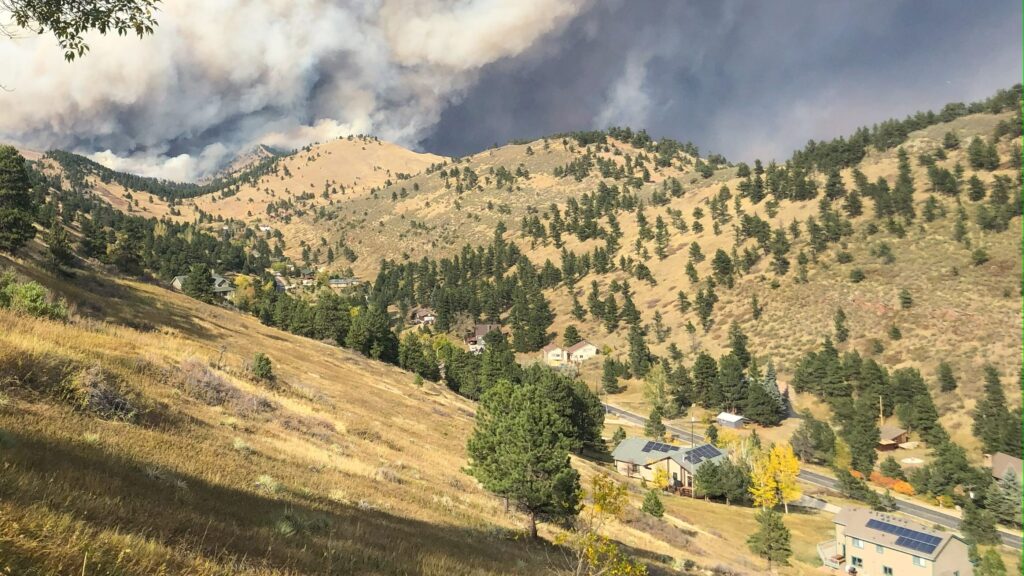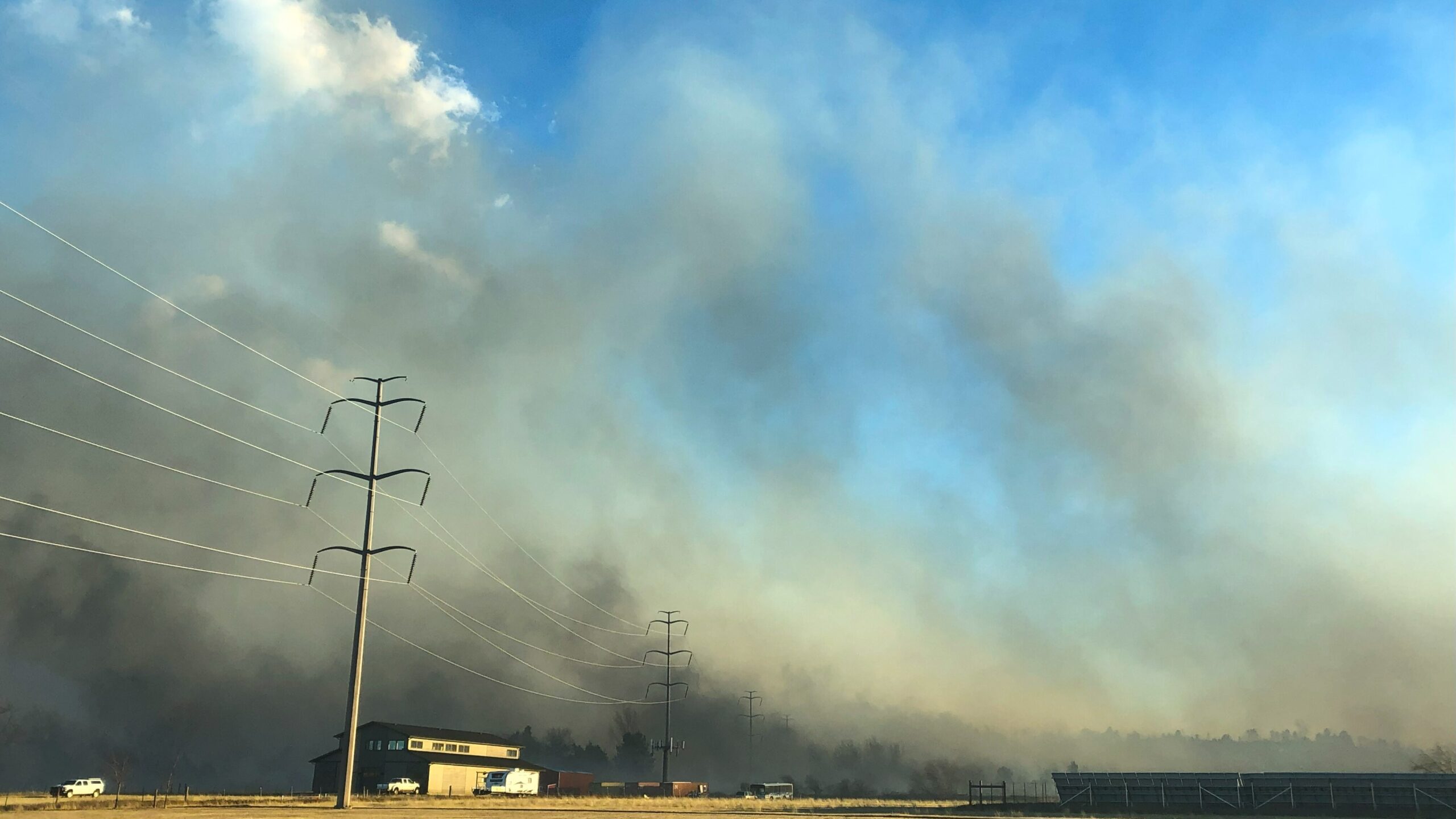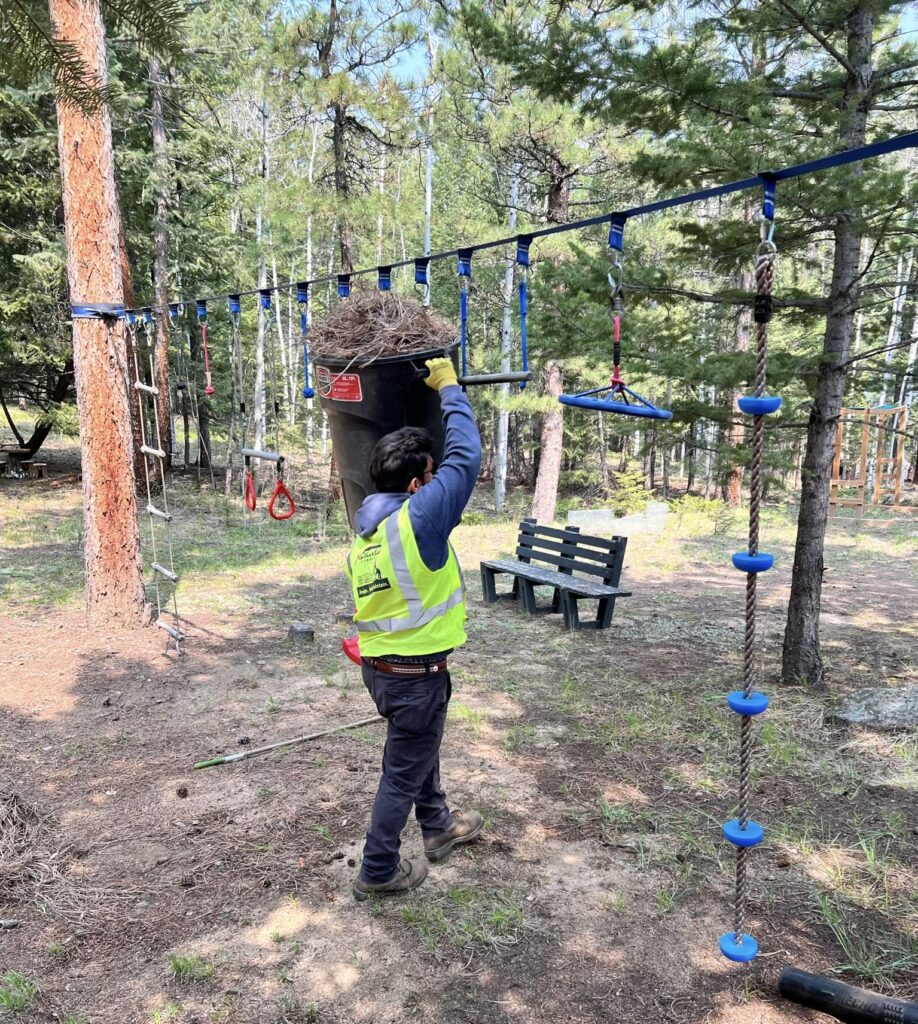Prepare Now for Fall and Winter Wildfires
July 2024 | Native Edge Landscapes
As we leave the warmer days of summer behind and head into cooler Fall temperatures, the threat of wildfire might be one of the last things on your mind. However, recent history reminds us that devastating wildfires during the fall and early winter months are not uncommon. This article is intended to remind local residents to be aware and prepare for Fall-Winter fire danger.

Why is our area so prone to extreme wildfires?
Wildfires have always been a natural occurrence in Boulder County, but various land management practices, including fire suppression, over the last 100 years has resulted in a forest with vegetation densities 10 to 100 times their natural state. Combine this with factors such as steep terrain, drought, high summertime temperatures, and seasonal high winds, and an increased human presence in the form of development and recreational use, the result is an environment prone to extreme wildfire behavior. These very dangerous conditions have led to fires which are more numerous and devastating than ever before, challenging the abilities and resources of agencies that fight fire.
Additionally, the response to a fire by emergency response organizations faced with these conditions is also limited by factors such as the amount of equipment and personnel available, number and location of water sources, difficulty or ease of access, and number and types of structures present.

Notable Boulder County Wildfires In The Last 25 Years
- Oct 2003 – The Overland Fire – 3,500 acres burned and 12 homes destroyed.
- Jan 2009 – 2nd Olde Stage Fire – 3,008 acres burned.
- Sep 2010 – The Fourmile Canyon Fire – 6,181 acres burned and 169 homes destroyed.
- Oct 2020 – The Cal-Wood Fire – 10,112 acres burned. 20 homes and 2 cabins destroyed.
- Dec 2021 – The Marshall Fire – 6,026 acres burned. 1,084 homes destroyed.
- Dec 2022 – Sunshine Canyon Fire – 19 acres burned. 1 home destroyed.
These fires have collectively destroyed more than 1,200 homes (and other structures), burned over 20,000 acres, and threatened the lives and properties of thousands of residents in Boulder County’s foothills and urban areas to the East.
What Can I Do to Prepare My Home for the Next Wildfire?
Prepare now for the next wildfire to give firefighters and your family the best chance to defend your property. Create a 30 to 100 foot safety zone around your home. Within this area, you can take steps to reduce potential exposure to flames and radiant heat. Homes built in pine forests should have a minimum safety zone of 100 feet. If your home sits on a steep slope, standard protective measures may not be enough – contact your local fire department or forestry office for specific information.
Within the zone, you will want to take the following steps:
- Rake and remove leaves, dead limbs and twigs – clear all flammable vegetation.
- Remove leaves and rubbish from under structures.
- Thin a 15-foot space between tree tops and remove limbs within 15 feet of the ground.
- Remove dead branches that extend over the roof.
- Prune tree branches and shrubs within 15 feet of a stovepipe or chimney outlet.
- Ask the power company to clear branches from power lines.
- Remove vines from the walls of the home.
- Mow grass regularly.
- Clear a 10-foot area around propane tanks and the barbecue. Place a screen over the grill – use nonflammable material with mesh no coarser than one-quarter inch.
- Regularly dispose of newspapers and rubbish at an approved site. Follow local burning regulations.
- Place stove, fireplace and grill ashes in a metal bucket, soak in water for 2 days, then bury the cold ashes in mineral soil.
- Store gasoline, oily rags and other flammable materials in approved safety cans. Place cans in a safe location away from the base of buildings.
- Stack firewood at least 100 feet away and uphill from your home. Clear combustible material within 20 feet of the wood pile.
- Review your homeowner’s insurance policy and also prepare/update an inventory of your home’s contents.

Need a hand maintaining defensible space?
From removal of organic debris around your home’s foundation and auxiliary structures, to cutting down the tall grasses and ladder fuels a bit further out, take a proactive approach this Fall and Winter by improving and maintaining your home’s defensible space. Learn more about how Native Edge Landscapes can help Maintain Your Defensible Space.
Get In Touch
To schedule a consultation or request services please call 303-245-9166, send an email to information@nativeedgelandscapes.com or Get In Touch through our website. One of our Customer Care Representatives will be happy to help.
